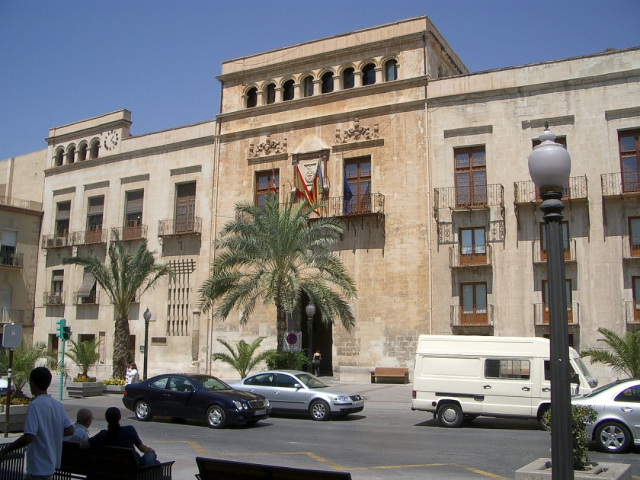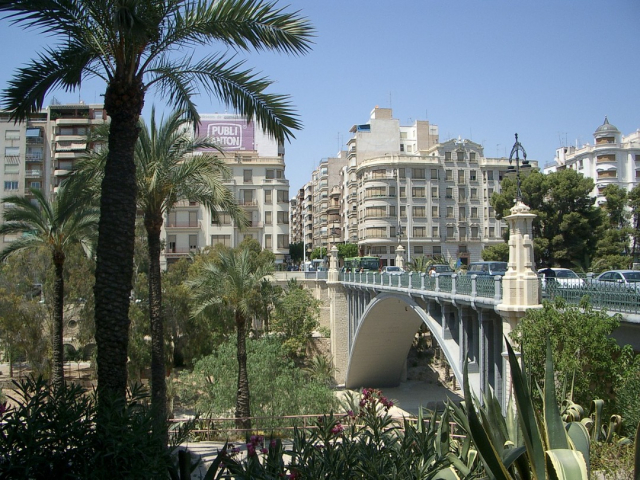Doing the Way of Saint James from Alicante
Camino de Santiago from
Discover everything you need to do the Camino de Santiago from the city of Alicante: distance, routes, monuments and tips.
- Camino de Santiago from Madrid
- Camino de Santiago from León
- Camino de Santiago from Sarria
- Camino de Santiago from Roncesvalles
- Camino de Santiago from A Coruña
- Camino de Santiago from Seville
- Camino de Santiago from Ponferrada
- Camino de Santiago from Burgos
- Camino de Santiago from Ourense
- Camino de Santiago from Bilbao
- Camino de Santiago from Oporto
- Camino de Santiago from Lisboa
- Camino de Santiago from Barcelona
- Camino de Santiago desde Pamplona
- The Camino de Santiago from Irun
- The Camino de Santiago from Astorga
- Camino de Santiago from Valencia
- The Way of Saint James from Saint-Jean-Pied-de-Port
- Camino de santiago from Viana do Castelo
- Doing the Way of Saint James from Zamora
- Doing the Way of Saint James from Zaragoza
- Doing the Way of Saint James from Alicante
- Camino de Santiago from Santander
- Camino Portugués from Coimbra
- Camino de Santiago from San Sebastián
- Camino de Santiago from Vigo: Guide of stages
- Camino de Santiago from Salamanca
- Camino de Santiago from Villafranca del Bierzo
- Camino de Santiago from Pontevedra
- Do the Camino de Santiago from Almería
- Camino de Santiago from Valladolid
- Doing the Way of Saint James from Navarra
Why do the Way of Saint James from Alicante?
Alicante is one of the cities in Spain that receives the most visitors each year, most of whom opt for a type of sun and beach tourism, but many others take it as a starting point to do the Way of St. James.
The main route that starts in this city in the Valencian Community is the Ruta de la Lana, which has its origins in the route followed by the wool merchants of the south in the time of Alfonso X the Wise.
What to consider before doing the Camino from Alicante?
First of all, the pilgrim should bear in mind that this is one of the longest routes to Santiago, as it covers a total of 675 km only to Burgos, where you must then continue along the French Way. It is also important to choose the time of year, as it passes through areas that are very hot during the summer months.
On the other hand, this route does not have many accommodations for pilgrims, so it will be necessary to use other accommodation options.
All the stages of the Camino de Santiago from Alicante
- Stage 1: Alicante - Orito (23 km)
- Stage 2: Orito - Petrer (20.5 km)
- Stage 3: Petrer - Villena (20.9 km)
- Stage 4: Villena - Caudete (15.2 km)
- Stage 5: Caudete - Almansa (25.9 km)
- Stage 6: Almansa - Alpera (21.9 km)
- Stage 7: Alpera - Alatoz (25.6 km)
- Stage 8: Alatoz - Casas Ibáñez (29.1 km)
- Stage 9: Casas Ibáñez - Villarta (26.5 km)
- Stage 10: Villarta - Campillo de Altobuey (29.8 km)
- Stage 11: Campillo de Altobuey - Monteagudo de las Salinas (31.5 km)
- Stage 12: Monteagudo de las Salinas - Fuentes (23, 1 km)
- Stage 13: Fuentes - Cuenca (21,6 km)
- Stage 14: Cuenca - Bascuñana de San Pedro (23, 8 km)
- Stage 15: Bascuñana de San Pedro - Villaconejos de Trabaque (27, 1 km)
- Stage 16: Villaconejos de Trabaque - Salmerón (28.3 km)
- Stage 17: Salmerón - Viana de Mondéjar (21, 5 km)
- Stage 18: Viana de Mondéjar - Cifuentes (20, 3 km)
- Stage 19: Cifuentes - Mandayona (25.7 km)
- Stage 20: Mandayona - Atienza (35, 7 km)
- Stage 21: Atienza - Retortillo de Soria (22 km)
- Stage 22: Retortillo de Soria - Fresno de Caracena (24 km)
- Stage 23: Fresno de Caracena - San Esteban de Gormaz (19, 4 km)
- Stage 24: San Esteban de Gormaz - Quintanarraya (30, 6 km)
- Stage 25: Quintanarraya - Santo Domingo de Silos (25, 4 km)
- Stage 26: Santo Domingo de Silos - Mecerreyes (23, 2 km)
- Stage 27: Mecerreyes - Burgos (34, 7 km)
Once the pilgrims are in Burgos they should continue along the French Way until they reach their final destination in Santiago de Compostela.
How to walk the Camino de Santiago from Alicante?
The Camino de Santiago from Alicante can be traveled in all possible ways, as it more than covers the necessary to get the Compostela.
Although this route can be done on horseback, pilgrims may encounter difficulties in finding suitable accommodation for horses on most of the route, so it is not highly recommended.
When to do the Camino de Santiago from Alicante?
The ideal time to do the Camino from Alicante is undoubtedly spring. At this time of year we will find warm temperatures, but pleasant for walking and it is also when most hostels and other services begin to open their doors to the arrival of more pilgrims.
Doing it in summer would not be a bad option, although in this case it is advisable to avoid walking in the central hours of the day and hydrate a lot. We should also bear in mind that certain sections of the French Way can be very crowded.
Where to sleep and where to eat?
As mentioned above, most of the Ruta de la Lana has very few hostels for pilgrims, so they should take other accommodation options, such as hostels or hotels. So to find accommodation in these places, pilgrims should not find many problems, at least in the larger towns and cities.
How to get to Alicante to do the Camino de Santiago?
Alicante can be reached in many ways, perhaps the most common is to use the AVE high-speed train from Madrid, although from here you can also get there via the A-31 motorway, which connects the Spanish capital with Alicante. From other parts of the Valencian Community you can get there using the AP7 motorway, which runs along the entire east coast of the Peninsula.
The city is also served by Alicante Elche Miguel Hernández Airport, which is only 12 km from the city and is well connected to numerous cities throughout Spain and other European countries.
How to return home from Santiago de Compostela when we finish the Camino?
Thanks in part to the success of the Camino de Santiago, the Galician capital is very well communicated with the rest of Spain and with some major European capitals. Lavacolla airport is only 11 km from the city and can be reached by an intercity bus that picks up passengers every half hour from the centre.
In addition to this, from the central rúa do Hórreo you can access the new intermodal station - bus and train - which connects pilgrims with other cities throughout Spain.
- Camino de Santiago from Madrid
- Camino de Santiago from León
- Camino de Santiago from Sarria
- Camino de Santiago from Roncesvalles
- Camino de Santiago from A Coruña
- Camino de Santiago from Seville
- Camino de Santiago from Ponferrada
- Camino de Santiago from Burgos
- Camino de Santiago from Ourense
- Camino de Santiago from Bilbao
- Camino de Santiago from Oporto
- Camino de Santiago from Lisboa
- Camino de Santiago from Barcelona
- Camino de Santiago desde Pamplona
- The Camino de Santiago from Irun
- The Camino de Santiago from Astorga
- Camino de Santiago from Valencia
- The Way of Saint James from Saint-Jean-Pied-de-Port
- Camino de santiago from Viana do Castelo
- Doing the Way of Saint James from Zamora
- Doing the Way of Saint James from Zaragoza
- Doing the Way of Saint James from Alicante
- Camino de Santiago from Santander
- Camino Portugués from Coimbra
- Camino de Santiago from San Sebastián
- Camino de Santiago from Vigo: Guide of stages
- Camino de Santiago from Salamanca
- Camino de Santiago from Villafranca del Bierzo
- Camino de Santiago from Pontevedra
- Do the Camino de Santiago from Almería
- Camino de Santiago from Valladolid
- Doing the Way of Saint James from Navarra
Routes
Blog
 How to get to Sarria to do the Camino de Santiago
How to get to Sarria to do the Camino de Santiago
 Descubre la magia del Camino de Santiago Portugués por la costa
Descubre la magia del Camino de Santiago Portugués por la costa
 5 tours culturales que puedes hacer en Galicia si decides hacer un alto en el camino
5 tours culturales que puedes hacer en Galicia si decides hacer un alto en el camino
 Doing the Camino de Santiago in June: What you should know?
Doing the Camino de Santiago in June: What you should know?
Information
Points of interest
Cities & Towns | Hostels | Lodgings | Restaurants | Saddlery | Doctors | Points of interest | Bikes workshop
Contact us | Privacy policy | Cookies policy | | Terms of use | Authorship | Web Map | Consentimiento
© Copyright LA VOZ DE GALICIA S.A. Polígono de Sabón, Arteixo, A CORUÑA (ESPAÑA) Inscrita en el Registro Mercantil de A Coruña en el Tomo 2438 del Archivo, Sección General, a los folios 91 y siguientes, hoja C-2141. CIF: A-15000649
Developed and managed byHyliacom

